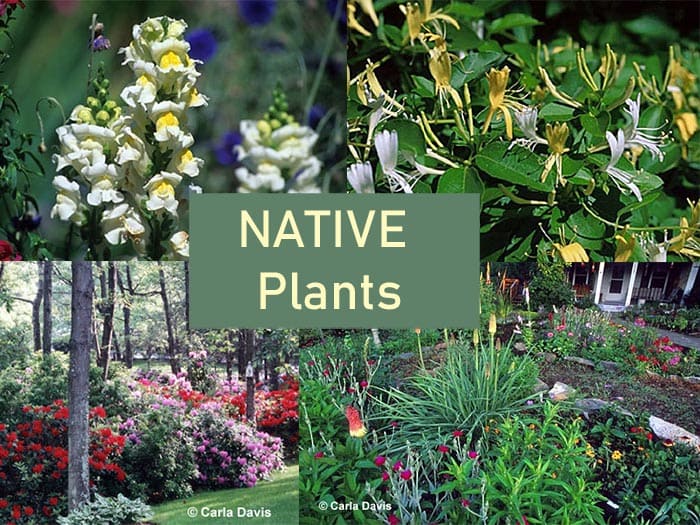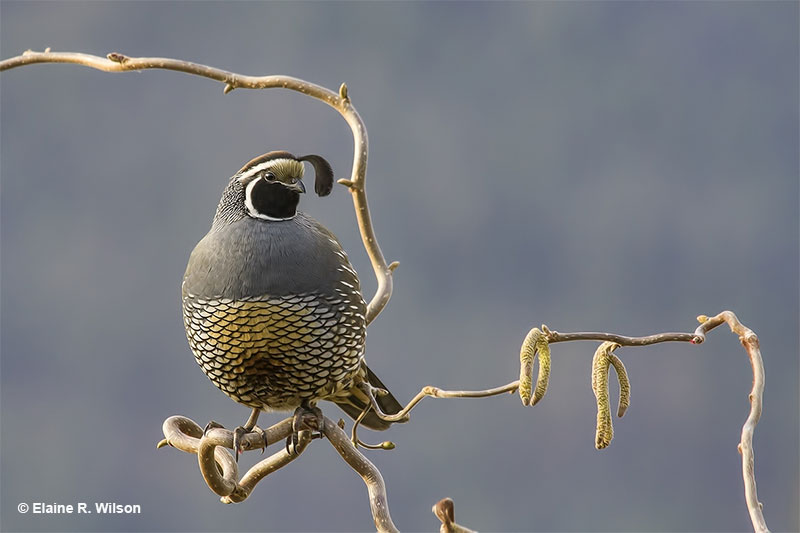
California Plants for Wildlife Habitat & Conservation Landscaping
Do you enjoy observing nature…hearing the song of the chickadee…watching hummingbirds fill up on nectar from trumpet vines…listening to the chattering of squirrels…seeing the beauty and grace of a monarch butterfly perched on a milkweed… experiencing the antics of a Mockingbird…the cooing of the Mourning Doves…the swiftness of the Cottontail…and the brilliance of a Cardinal or Baltimore Oriole?
If the answer is “yes“, you’ll probably want to landscape your property for wildlife so you can experience even more from Mother Nature by attracting more wildlife to your property.
Wildlife doesn’t just randomly appear in a given area. It is there because of favorable habitat. The essential elements that you must provide in your habitat are food, water, cover and a place to raise a family. To attract the most wildlife, you need native trees, shrubs, groundcover, vines and wildflowers, many of which will provide food and shelter.
Native or indigenous plants naturally occur in the region in which they evolved.
They are adapted to local soil, rainfall and temperature conditions, and have developed natural defenses to many insects and diseases. Because of these traits, native plants will grow with minimal use of water, fertilizers and pesticides. Wildlife species evolve with plants; therefore, they use native plant communities as their habitat. Using native plants helps preserve the balance and beauty of natural ecosystems.
Remember the function served by plants and structures is more important than their appearance. In other words, don’t base your planting decisions solely on what a plant looks like. Following are WindStar Wildlife Institute’s plant recommendations for wildlife habitats in California

California Quail in the state bird of California
Trees
Tall–Oak, Sycamore, Cottonwood, Pine, Cypress, Red or White Alder, Big Leaf Maple, CA Box Elder
Shorter–CA Black Walnut, Desert Willow, Ash, Redbud, Scrub Oak, Western Serviceberry, Madrone, Dogwood, Hazelnut
Shrubs
Elderberry, Mountain Mahogany, Currant, Blackberry, Gooseberry, Bush Mallow, Summer Holly, Ceanothus, Manzanita, CA Sagebrush, Artemesia, Toyon, Mahonia, Desert Olive, Buttonbush, Chuparosa, Saltbush, Bush Sunflower
Flowers
Monkey Flower, Wallfloewr, Penstemon, Cardinal Flower, Red Thistle, Columbine, Multi-flowered Snapdragon, Lupine, Sage, Salvia, CA Fuschia, Coyote Mint, Buckwheat, Rabbitbrush, Seep Willow, Sunflower
Cactus
Prickly Pear, Cholla
Vines
CA Blackberry, Western Virgin’s Bower, CA Wild Grape
Groundcovers
Vetch, Wild Strawberry, Wild Ginger, Bearberry, Bunchberry, Mountain Pennyroyal, Western Swordfern, Redwood Violet
Grasses
Alkali Rye, Spikerush, Horsetail, CA Oatgrass, Tufted Hairgrass, Blue-eyed Grass
California is recognized for its diverse landscape. In Northern California, you’ll find the vineyards of Napa Valley. Turning southward you will find the Central Valley and High Sierras. The Central Coast features many beaches. The south offers the California deserts–Palm Springs and Death Valley. The California Native Plant Society can provide lists of plants for a specific region.
For more information on improving your wildlife habitat, visit the WindStar Wildlife Institute web site. On the web site, you can also apply to certify your property as a wildlife habitat, register for the “Certified Wildlife Habitat Naturalist e-Learning course, become a member and sign up for the FREE WindStar Wildlife Garden Weekly e-mail newsletter.

